
Learn how to make Tandoori Gobi and homemade Tandoori Masala ~ Roasted whole head of cauliflower marinaded with spicy yogurt flavoured with homemade tandoori masala spice blend
The doors and windows are wide open and thin, soft muslin curtains fluttering in the warm sun kissed breeze. Outside in the garden, the borders are decked with colourful flower beds that attract the buzzing bees and colourful butterflies. The trees are standing tall and proud showing off their beautiful mane of lush green leaves. The heady fragrance of roses, mogra and lilies perfume the air and senses… It is summer... the most wonderful season!

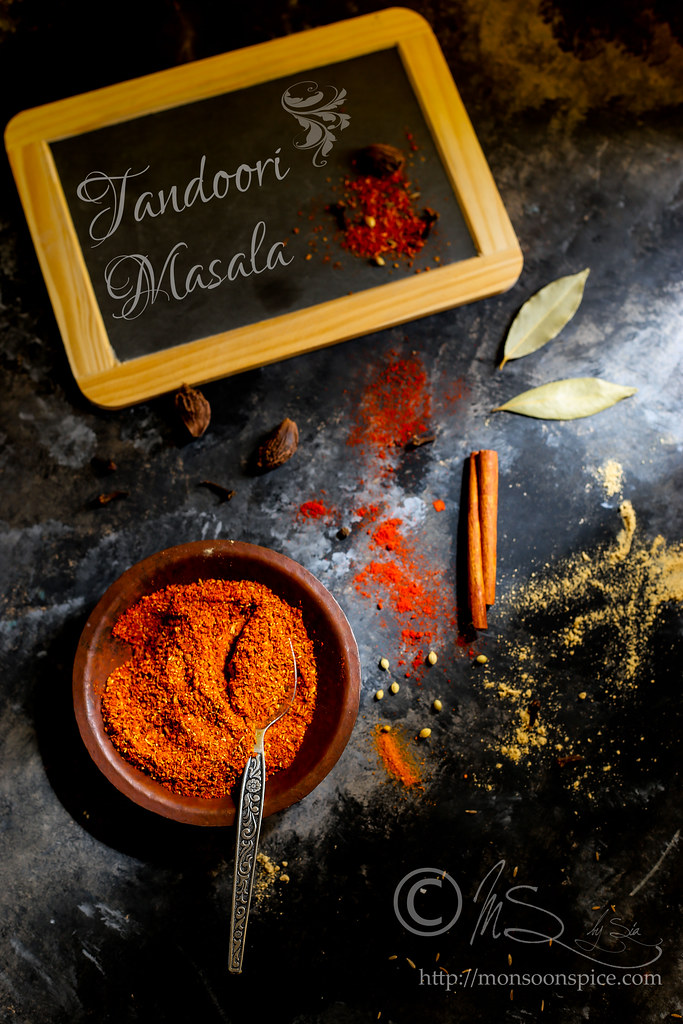
Homemade Tandoori Masala spice blend
My morning walks have become longer as I no longer need to cover myself with layers of clothing and thick coats/jackets weighing me down! My steps are lighter as I walk around in flip flops and shorts enjoying the warm sun on my face and breeze messing my hair! The people I meet on my walking route, and even the strangers, are greeting one another with big smile. That’s what the summer sun does to you… Happy and cheerful…
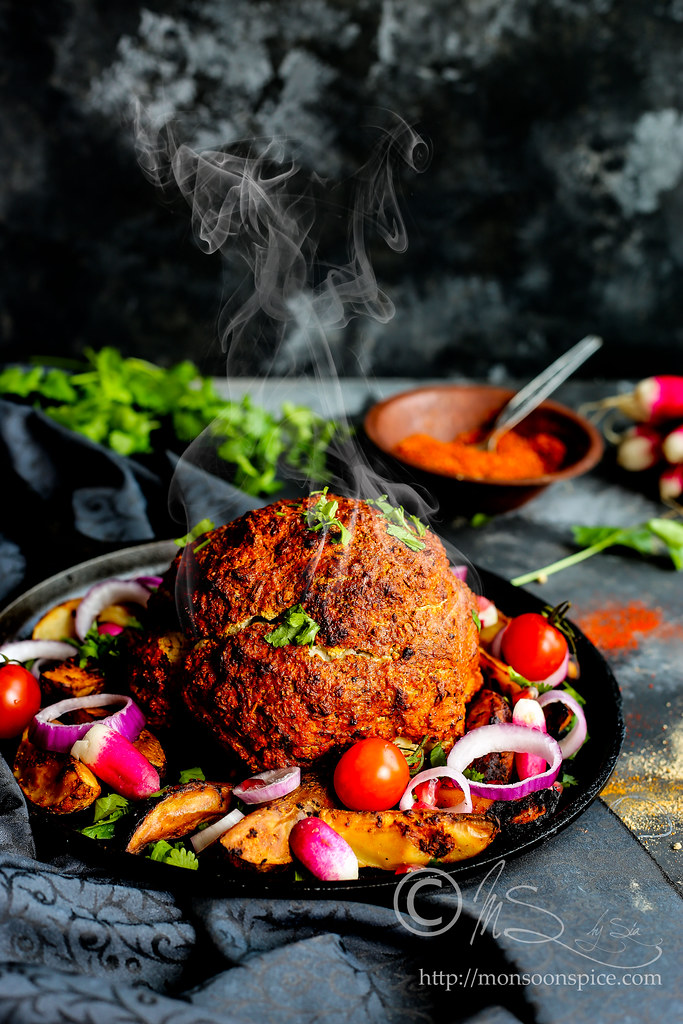
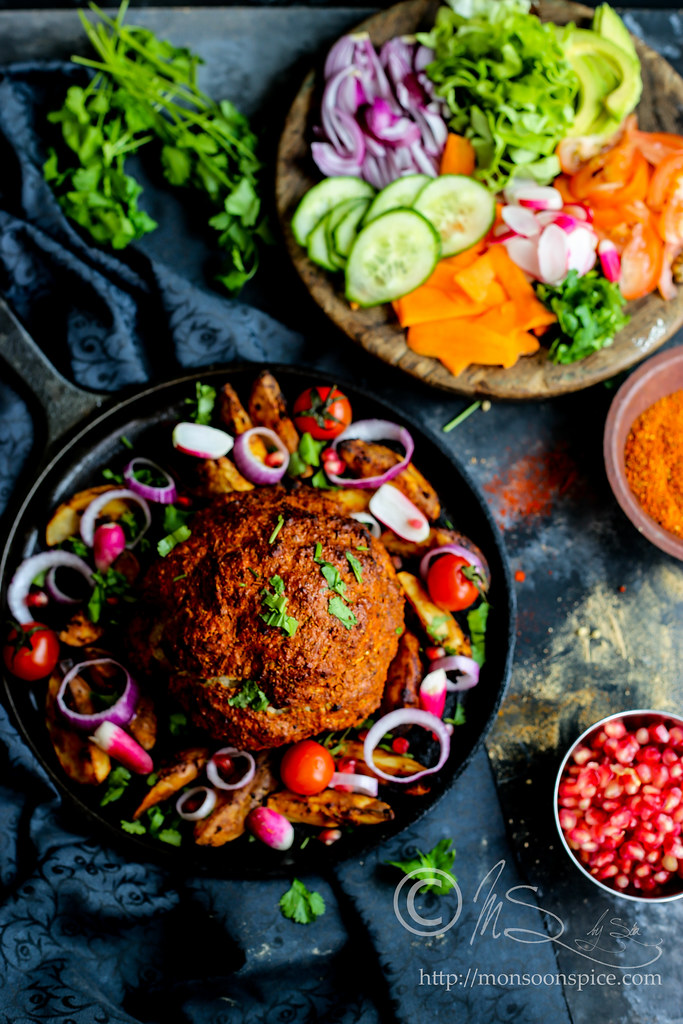
Ice creams, fruit popsicles, berries, chilled smoothies, iced teas, cold salads have replaced the warm bowls of soups and spicy curries. As the days are getting humid and warmer, I find myself spending less time in the kitchen coking an elaborate and fancy meals. It’s a miracle if I can spend more than 30 mins in the sweltering hot kitchen as I have ditched the long hours in the kitchen to long walks in the woodlands, beaches and pottering around in our little garden. So, this is a season for hands off cooking meaning very minimal prep time, low supervision but high flavour meals that everyone, including the pickiest eaters, will love! Sounds impossible? Well, it is possible with little planning ahead. And the result is just few active cooking time and you have a wholesome supper ready in no time! Like this Tandoori Gobi, a whole baked cauliflower flavoured with yogurt marinade spiced with homemade Tandoori Masala.
The history of the tandoor and its origins have been much discussed. The word Tandoor is derived from Persian word ‘Tannur’, which is derived from Babylonian word ‘tinuru’ based on Semitic word ‘nar’ meaning fire. In Turkey, Tannur became Tandur or Tandoor as it is familiar to us. Although the popular belief is that Tandoor oriinated in Persia (present day Iran) and brough to India via Afghanistan by Arabs, the story of tandoor clay ovens starts around 5000 years ago in India, dating back to 3000 BC where small mud plastered ovens resembling Tandoor with a side door have been found in Harappa and Mohenjo-Daro settlements of ancient Indus valley civilization. During fourteenth century, a noted poet, Amir Khusrau describes Naan-e-tanuk (light bread), and Naan-e- Tanuri (Cooked in Tandoor) at the imperial court in Delhi. The fourth Mughal emperor Jahangir is credited with making Tandoor portable and the royal cooks were instructed to transport Tandoor to anywhere he travelled. Tandoor was used to make Naan, roast whole baby chicks (Chooza and present day tandoori chicken) and large pieces of lamb.
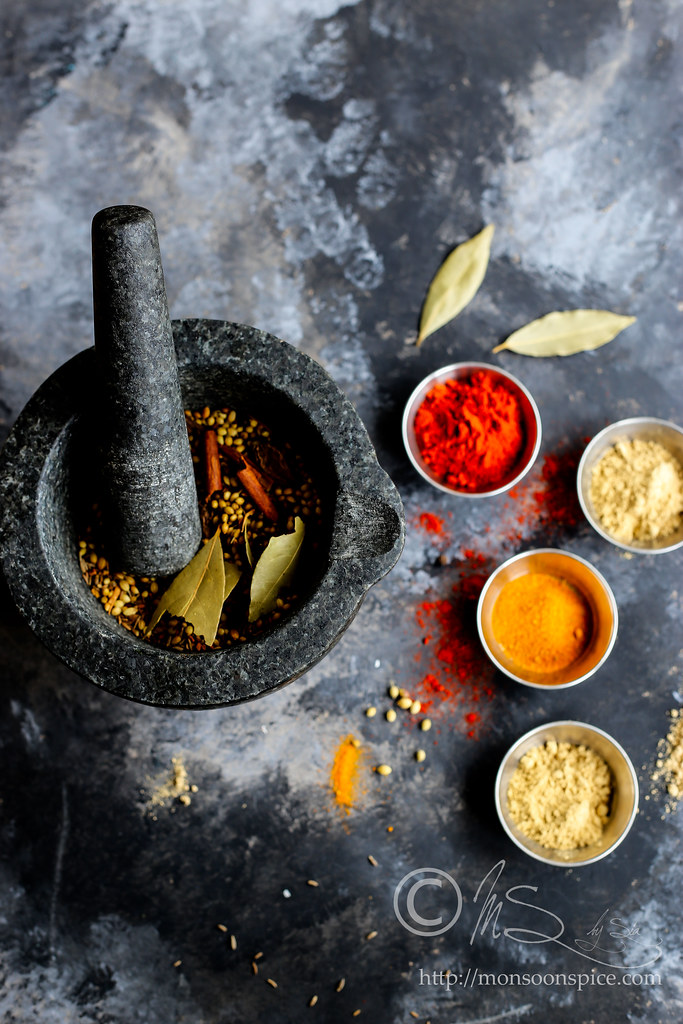
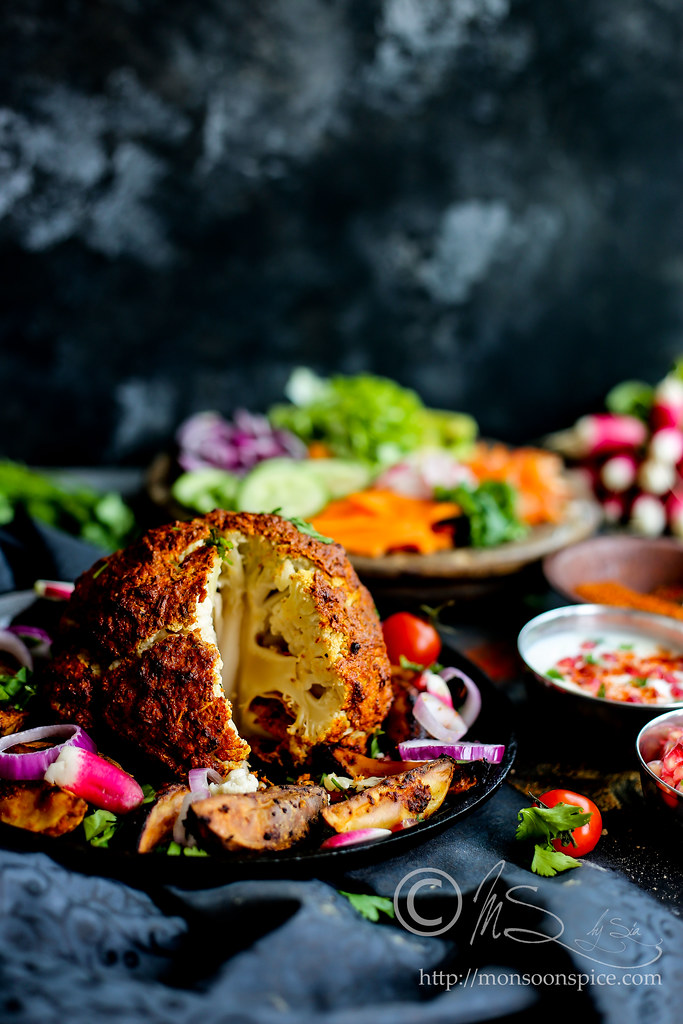
In ancient days, the Tandoor was built in the ground and served as a bread making area for the entire communities. The ovens evolved over time and were built out of dried clay, metals, and ceramic above the ground and is cylindrical in shape and it can retain a temperature up to 900°F. In India, the tandoor is also known as “Bhatti,” named after a tribe in the Thar Desert. It is common for tandoor to remain lit for long periods of time to maintain the high cooking temperature. The word tandoori is the adjective meaning "pertaining to the tandoor" and is used to describe a dish cooked in a tandoor. The cylindrical belly shaped design of tandoor oven makes it very efficient and the contemporary ovens can never match the taste and quality of food cooked in tandoor. The tandoori dishes have a distinct aroma, taste, texture and low fat contents that makes the tandoor so popular and unique worldwide. Cooking foods on a live fire oven allowed for the fat and food juices to mix and drip onto the charcoal or wood itself, giving meats, breads and vegetables a richer flavor.
The cook ignites a charcoal fire on the floor of the oven and the heat rises to a searing level midway up, only to cool down by the time it reaches the top. The tandoor cooking uses for distinct techniques; direct heat rising from the pit filled with charcoal a process akin to grilling, the hot clay walls of the tandoor bake bread in a way like griddling or skillet roasting, the glowing heat in the belly of the tandoor produces results like convention baking and finally, the smoke arising from the marinade and meat juices dripping onto the hot coals adds that distinct fragrance and flavour. Everything from chicken to lamb to fish to bread is slipped into this versatile chamber, emerging not long after with an earthy taste and fragrance imparted by the clay walls. Meats and fish come out moist and tender thanks to the intense heat and quick cooking. Although the tandoor ovens were built in royal kitchens and even common households, it was only in 1948 the very first built-in tandoor was installed at a restaurant called Moti Mahal in Delhi, India and now the people all over the world can’t get enough of popular tandoori dishes cooked in every small road side eateries called Dabha to Michelin stared restaurants in London and New York! Indian restaurants have come so far now that it’s hard to imagine a time when cooking in the tandoor was a method considered unique and very rare.
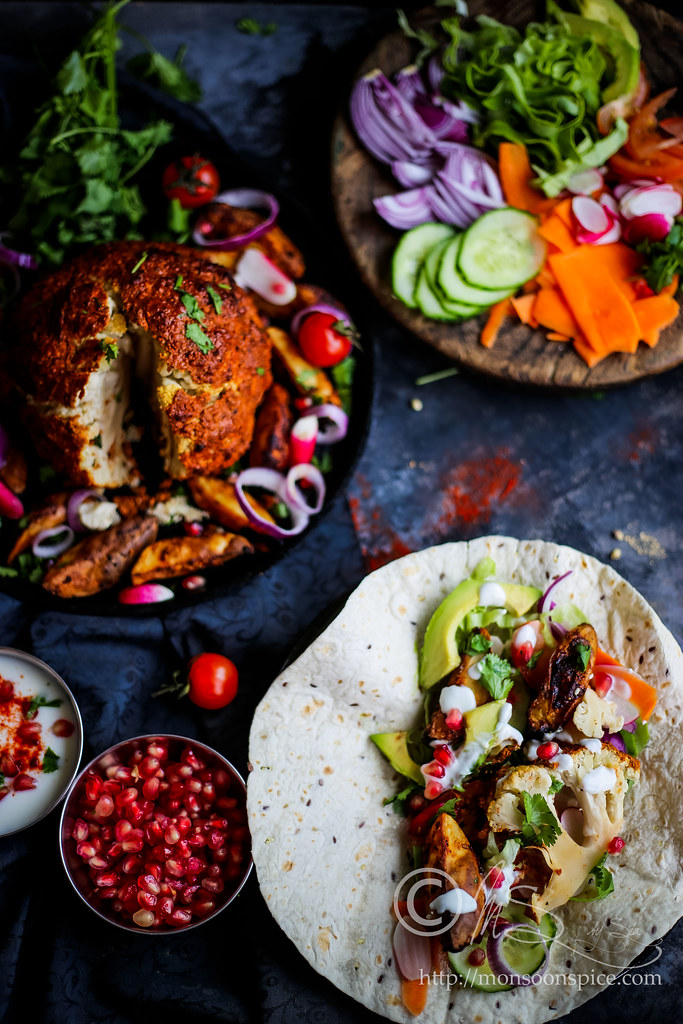
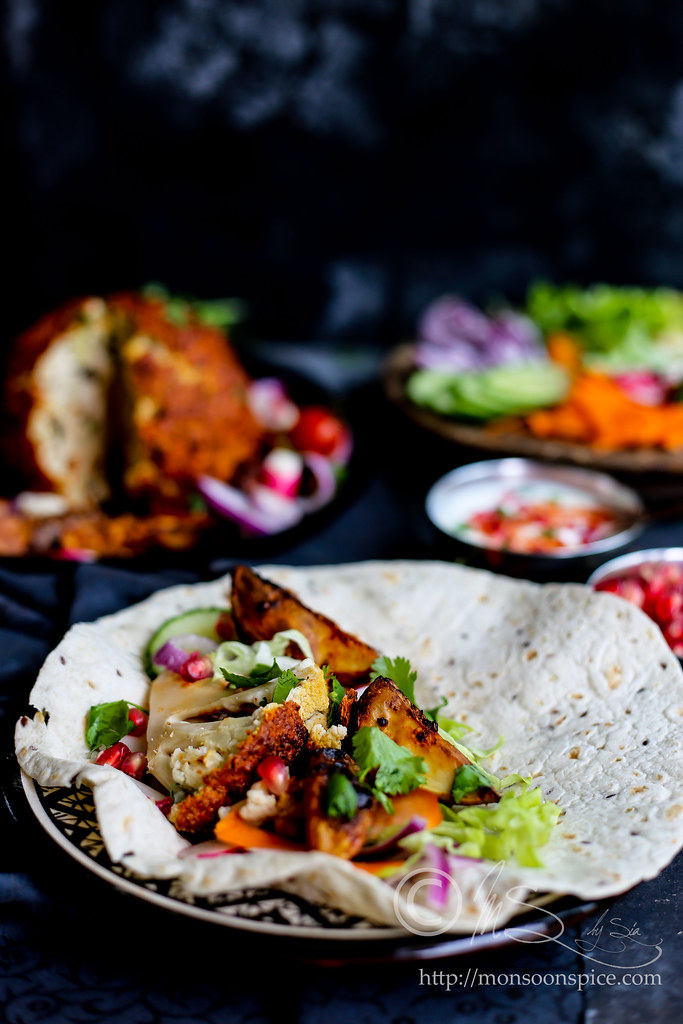
The tandoori cooking more than just skewering the meat or vegetables and cooking. It is infact, more than just that as marinating is the key to developing exceptional flavour of tandoori dishes. Ingredients cooked in a tandoor are marinated, sometimes twice, in special aromatic yogurt marinades to flavour and tenderise. Some of these marinades have more than 30 ingredients in them! The marinated meat, fish or vegetables are then threaded onto specially designed metal skewers, lowered into the tandoor oven and cooked at temperatures as high as 400°C. The meats cooked in a tandoor are generally moister and more tender than those cooked by any other method. In addition, they have a special earthy aroma and rustic flavour absorbed from the clay lining of the oven. As old fashioned as the tandoori cooking technique may look, the fact is that tandoori dishes deliver a deliciously smokey piece of meat or vegetable that is chargrilled to perfection and is tender and juicy.
The end results are dishes packed with complex flavours you just can’t duplicate at home.
Yes, I said it! It is impossible to duplicate the distinct flavour and aroma of dishes cooked in tandoor at home. But it is still possible to create a smokey flavour by using a special blend of spice mix and cooking in an oven at maximum heat that your oven can and finally broiling or grilling it for couple of minutes to get that chargrilled aroma. Like how I made this Tandoori Gobi by baking a whole head of cauliflower marinated in homemade Tandoor Masala. This Tandoori Gobi is one of the simple and offhand cooking I have ever done and with little preparation of making your own fresh batch of fragrant, no preservative, homemade Tandoori Masala spice blend (recipe below) in advance, it just takes about 5 minutes of your active time to put everything together. Prepare the cauliflower, marinade it, let it rest in refrigerator and pop it in the oven to do its magic! That’s it! It is really, really that simple and the end result is beautifully spiced, roasted whole head of cauliflower that is crisp on the surface and moist and juicy within with smokey flavour and chargrilled to perfection which will delight and impress your taste buds!
Apart from serving it as impressive side with tandoori roti, phulka, naan or kulcha or any flavoured basmati rice like pulao or jeera rice, I love using it as a filling for wraps, rolls or pitta bread with some sliced onions, tomatoes, cucumber, carrots, avocado and pomegranate, drizzled with some whisked yogurt spiced with roasted cumin powder and chaat masala or salt. You can also serve this as a salad bowl or Buddha Bowl. Arrange the vegetables of your choice and Tandoori Gobi in a large bowl. Drizzle some whipped yogurt flavoured with a generous pinch of kala namak (black salt), chaat masala and roasted cumin powder or any sauce or chutney of your choice and enjoy! So without further ado, let’s get cooking a fresh batch of homemade Tandoori Masala, which I can promise will make you stop from buying store bought masala with artificial colour and flavourings, and super tasty Tandoori Gobi. Shall we get cooking?
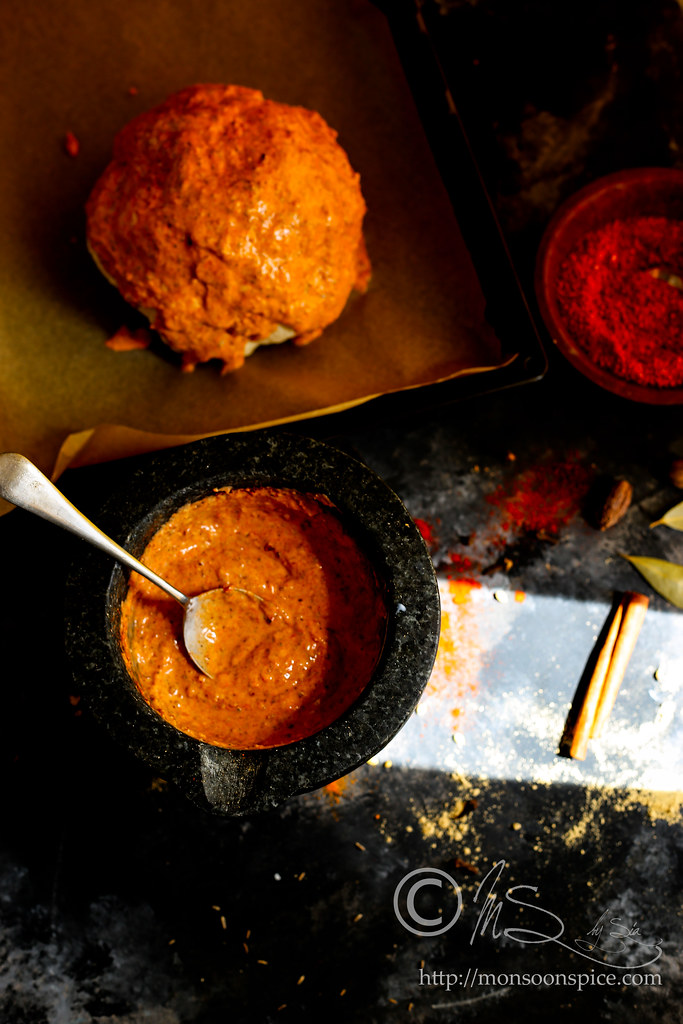
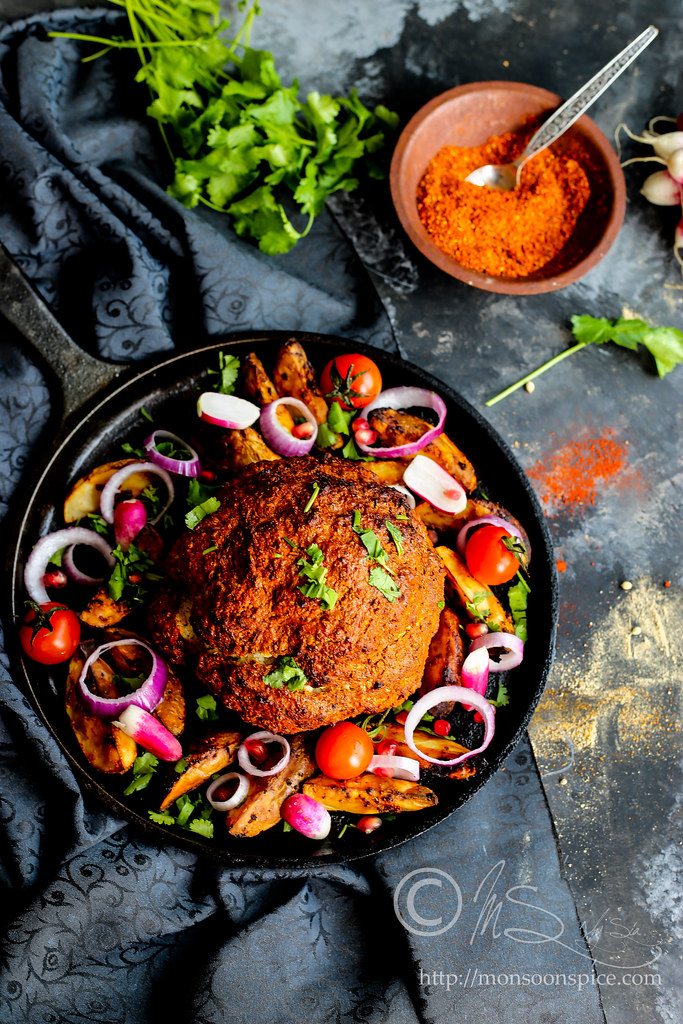
Tandoori Gobi (A whole head of roasted cauliflower marinated in spicy yogurt made using homemade aromatic Tandoori Masala spice mix)
Prep Time: 10-15 mins
Resting Time: Minimum 1 hour to overnight
Cooking Time: 40-45 mins
Cooking Level: Easy/Beginner
Spice Level: Medium to High
Serves: 6-8 people
Shelf Life: Best served fresh
Serving Suggestion: As a side dish with flavoured Basmati rice or any Indian flat breads or as a filling for rolls/wraps/pitta or in Buddha bowl (read notes)
Ingredients:
Ingredients for Tandoori Masala Powder:
2-inch Cinnamon Stick
1 tsp Cloves
2 Black Cardamoms
1-2 Bay Leaves
1 small Nutmeg
1 Mace
1 tsp Methi/Fenugreek Seeds
4 tbsp Dhania/Coriander Seeds
1 tbsp Jeera/Cumin Seeds
1 tsp Black Peppercorns
½ tsp Haldi/Turmeric Powder
2 tbsp Kashmiri Chilli Powder/Paprika
1 tsp Dry Ginger Powder
1 tsp Garlic Powder
Ingredients for Tandoori Gobi:
1 small head of Cauliflower
1 large or 2 medium Potatoes, scrubbed, washed and cut into ¾ inch thick wedges
1-2 tbsp Oil
1 tsp Salt
For Marinade:
1¼ cup Hung Curds/Greek Yogurt
2-3 tbsp Tandoori Masala (Adjust as per taste)
1 tsp Ginger Paste
1 tsp Garlic Paste
½ tbsp. Kasuri Methi/Dry Fenugreek Leaves, crushed
1-2 tsp Sugar
1 tsp Salt (Adjust as per taste)
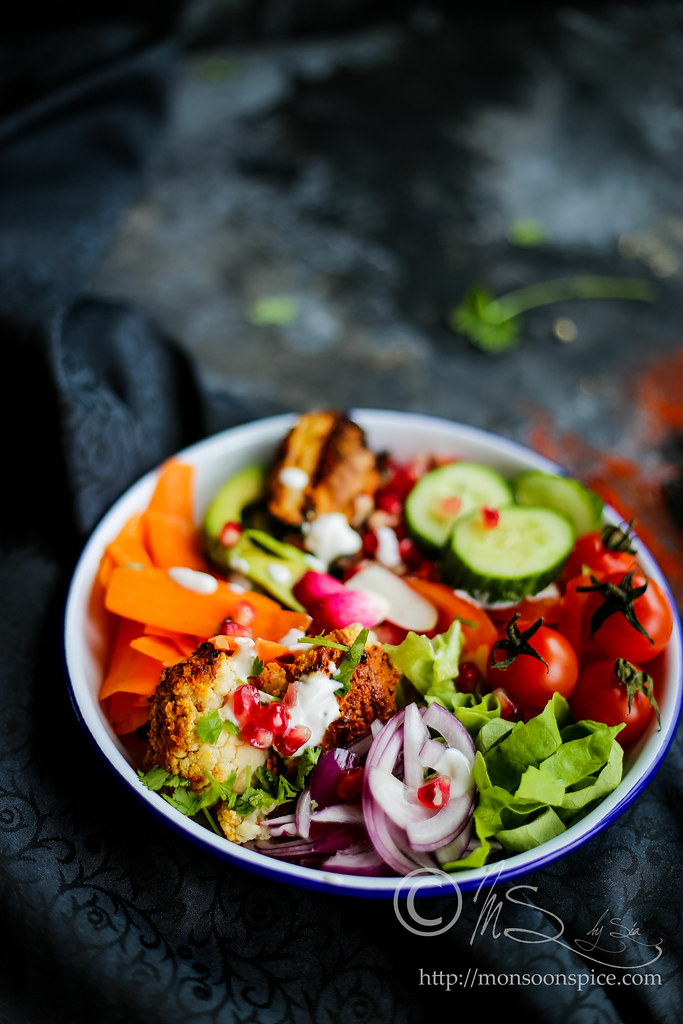
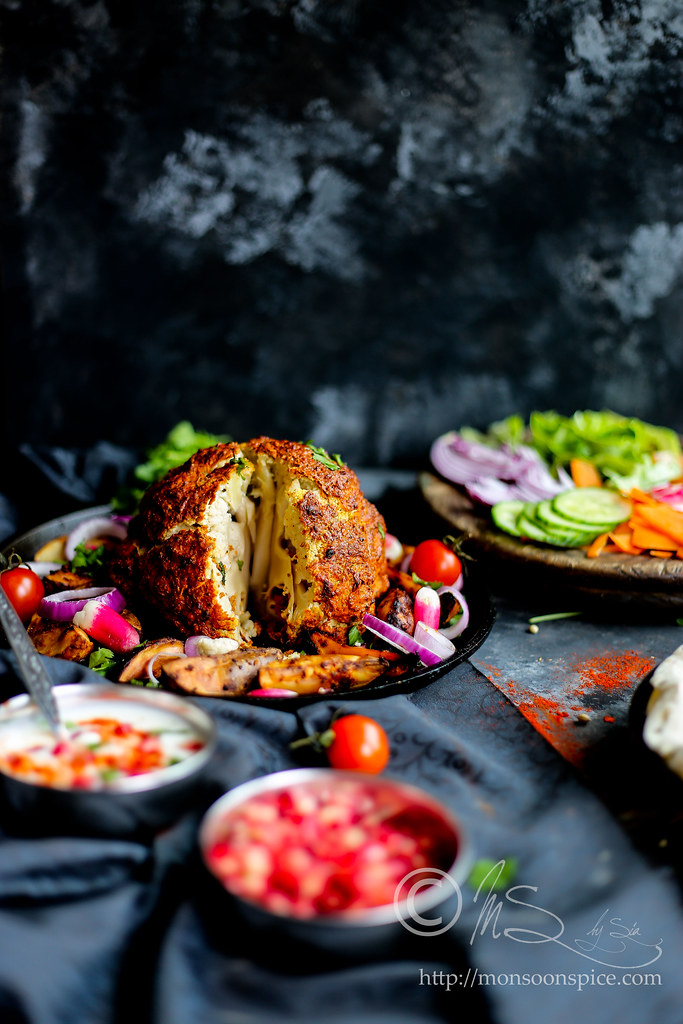 Method:
Preparation:
Method:
Preparation:
- First prepare the Tandoori Masala powder. Take cinnamon, cloves, black cardamoms, bay leaves and nutmeg in a pan and roast them on low heat for 2 minutes, stirring continuously, until the heady aroma of roasted spices wafts through. Transfer the roasted spices to a clean, dry plate.
- In the same pan, add fenugreek seeds, coriander seeds, cumin seeds, black peppercorns, and mace and roast them on low flame for two minutes or little more until the spices change colour to deep golden brown. Please do take care not to over roast or burn the spices as they will taste bitter. Transfer the roasted spices to a plate and let it cool down to room temperature.
- Once the spices have cooled down completely, crush them to fine powder in a blender or spice grinder or hand pound them using pestle and mortar. If crushing them in a blender or spice grinder, use the pulse action couple of times. Open the lid and scrape the spices stuck to the sides and lid and mix them well before blending them again using the pulse action. This is to prevent the spices from heating up and losing their essential oils which will reduce their aroma and flavour. Personally, I prefer to hand pound them in my trusty large pestle and mortar for this reason.
- Add the Kashmiri chilli powder, turmeric powder, dry ginger powder and garlic powder and mix them well. You can sieve the spice mix to get fine powder, but personally I prefer it little coarse.
- Let the spice powder cool completely before transferring it into a clean, dry, sterilised glass container with airtight lid. This yields around ¾ cup of Tandoori Masala and stays fresh for up to 3 months at room temperature.
- Next prepare the cauliflower by trimming the stem at base and removing the leaves. Wash the cauliflower thoroughly.
- Take a pot large enough to hold the entire cauliflower head. Add enough water to cover the entire cauliflower and mix a tsp of salt and ¼ tsp turmeric powder and bring it to boil.
- Turn off the flame and place the whole cauliflower and let it sit for 5-6 minutes. The idea is to par cook the cauliflower and not to cook it completely as it starts to break and disintegrate.
- While the cauliflower is resting, prepare the marinade by whisking the yogurt to remove any lumps. Add 2-3 tbsp of freshly made Tandoori Masala, ginger and garlic paste, crushed kasuri methi, sugar and salt to taste.
- Remove the cauliflower from boiled water and let it cool down to room temperature. Pat it dry with a kitchen towel to remove any water. Place it upside down on a roasting dish or tray lined with parchment paper. Take a spoonful of marinade and spread it well with fingers or a brush. Flip the cauliflower and pour the marinade, a tbsp. at time, to cover the entire head of cauliflower.
- If you have excess marinade, mix it with potato wedges and keep it aside. Let the cauliflower and potato wedges rest covered for minimum 1 hour in refrigerator. I personally prefer to rest it overnight or for 5-6 hours for the flavours to blend and develop if making it for dinner parties.
Proceed to cook:
- Preheat the oven at 200 deg C.
- Remove the cauliflower from refrigerator. Place the baking tray or baking dish in the oven and let it bake for 10 minutes.
- Remove the cauliflower and brush the entire head with little oil or melted butter. Arrange the marinated potato wedges around the cauliflower. Place it back in the oven and let it bake for another 15-20 minutes or until the it turns golden brown and is cooked through.
- The most delicious Tandoori Gobi or Spicy Whole Roasted Cauliflower is ready to serve.

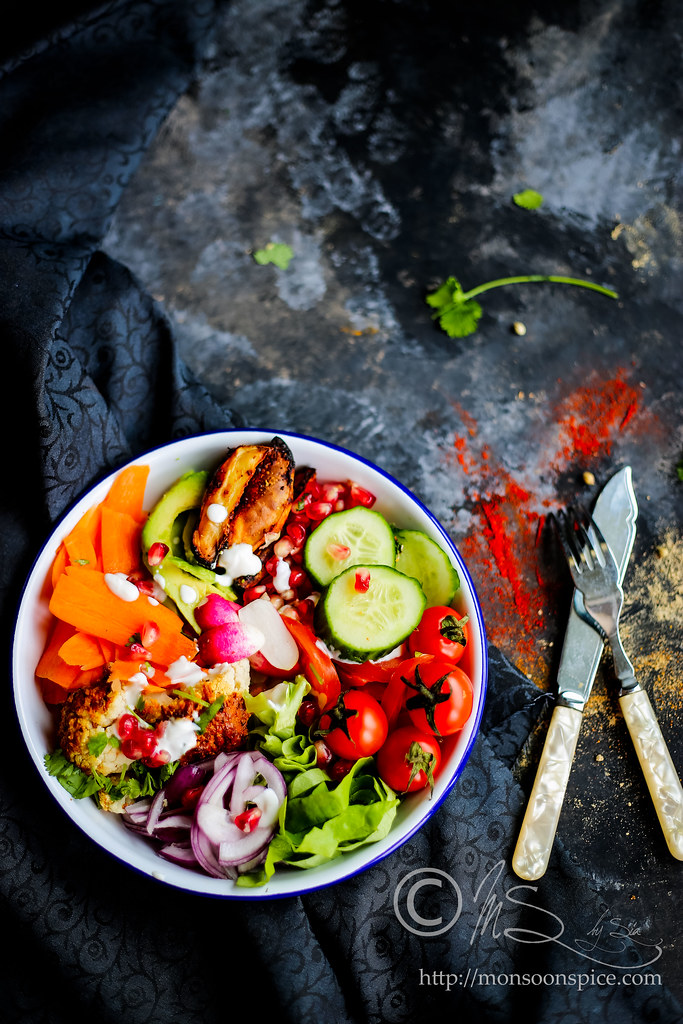 Serving Suggestion:
Serving Suggestion:
- You can serve this Tandoori Gobi as side dish with flavoured basmati rice or with roti, naan or chapatti.
- You can use it as a filling for wraps, rolls or pitta bread with some sliced onions, tomatoes, cucumber, carrots, avocado and pomegranate, drizzled with some yogurt spiced with roasted cumin powder and chaat masala or salt as shown above.
- You can also serve this as a salad bowl or Buddha Bowl. Arrange the vegetables of your choice and Tandoori Gobi in a large bowl. Drizzle some whipped yogurt flavoured with a generous pinch of kala namak (black salt), chaat masala and roasted cumin powder or any sauce or chutney of your choice and enjoy!
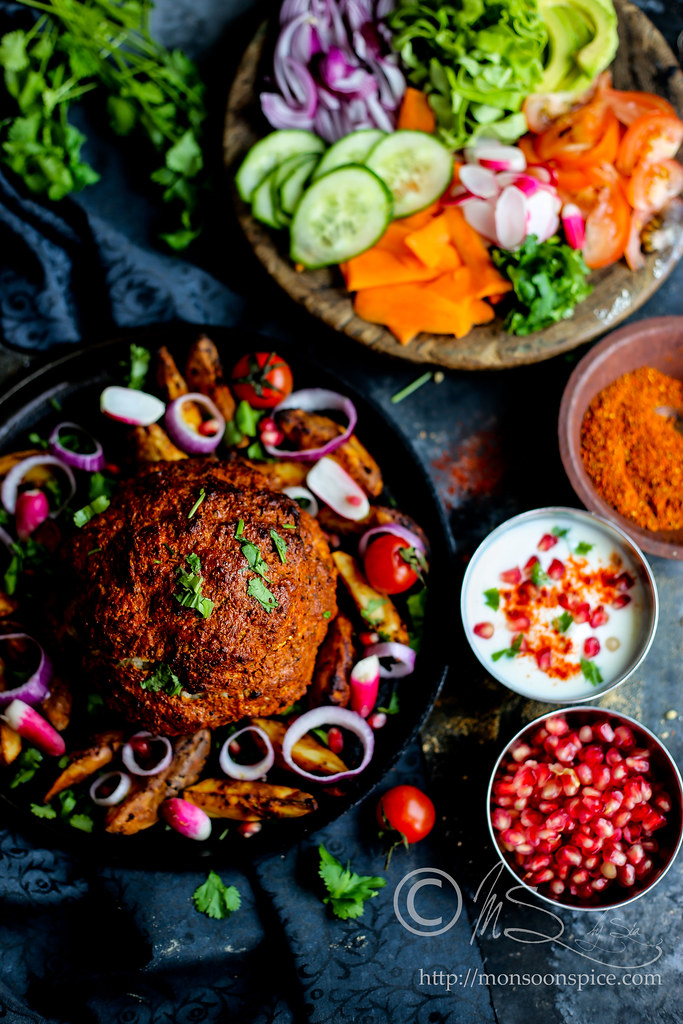

Sia’s Notes:
- Make sure you don’t over roast or burn the spices when making Tandoori Masala as it will taste bitter. Make sure you cool down the roasted spices completely before grinding them.
- You can use readily available Tandoori Masala from shops instead of making it from scratch. But the flavour and aroma of fresh homemade spice mix is much superior to that of bulk produced, store bought ones.
- Take care not to overcook the whole head of cauliflower until it breaks or disintegrates. You just need to cook the cauliflower in boiled water for at the most 5 minutes.
- The Tandoori Gobi tastes best when the cauliflower is marinated for 6-8 hours or overnight. But if you are short on time, make sure you marinate it for at least an hour for the flavours to develop and blend harmoniously.


















I love cauliflower and this one looks delish. Thank you for the recipe.
ReplyDeleteI too love cauliflower and I keep experimenting new recipes with it. Glad you like it :)
DeleteThis is not only absolutely gorgeous but looks incredible! I need to put this on my list!!
ReplyDeleteThank you, Sophia! If you like cauliflower and spices, then you will definitely like this Tandoori Gobi :)
DeleteWe had something like this at a restaurant in NYC this spring and it was SO good! I've never tried making it on my own though!
ReplyDeleteReally? That's wonderful. I am yet to find an Indian restaurant outside India and even in India who serve whole head of roasted cauliflower. You really are lucky to have sampled the Tandoori Gobi cooked in Tandoor oven then :)
DeleteWhat a gorgeous post!! The spices are so beautiful and your photos are stunning!
ReplyDeleteSues
Thanks a lot, Sues :)
DeleteYour pictures are so beautiful, hope I can find all ingredients because this recipe is really intriguing, would like so much to try it!
ReplyDeleteYour pictures are so beautiful and this recipe looks so yummy! I hope I can find all ingredients because I am very intrigued :)
ReplyDeleteSuch an innovative dish Sia , enjoyed reading this post !!
ReplyDeleteNice recipe and excellent photos. Keep posting such excellent recipes and inspiring others. Thank you.
ReplyDeleteHi Sia, things are looking delicious here! Hope you are well! I love the different spoons holding spices - very clever shot :)
ReplyDeleteAll the best! Linda
I was so excited to try this as I love cauliflower. Unfortunately I didn't quite enjoy the dish. Firstly, it took almost an hour for the cauliflower to get cooked. Even after an hour, the vegetable was just cooked, it was not roasted well as I expected. I lost patience to cook it further as I was really hungry. Also, the potato wedges were raw in the middle even though I had added them in the beginning itself. I bake a lot so I am sure nothing is wrong with my oven and I followed the recipe to a T. The tandoori masala tasted good but the taste was limited to just the top layer. I know that the cauliflower wouldn't absorb the flavours much, but it was very much bland that I had to wonder if the 7 hours of marination actually helped.
ReplyDelete